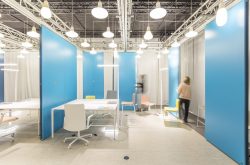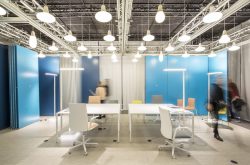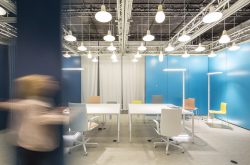Internationally renowned architect, Alfonso Femia is the founder of Atelier(s) Alfonso Femia, a design studio active from small to large scale throughout Europe, from Italy to France.
Why do you use laminate?
Ezio Manzini, engineer and architect, author of “The matter of the invention”, defines the surface of objects with the brilliant expression “material on the front line”. The surface must be able to react with performance aplomb to a series of mechanical, chemical and biological stresses, even severe ones. The surface is, in the man-object relationship, the emotional interface that involves the tactile, visual, olfactory experience. Many functions are delegated to a surface, for example that of transferring or prohibiting the exchange between the outside and the inside of the object. Laminate has historically been the subject of the exercise and evolution of design and is today an ideal synthesis for expressive versatility and performance quality of all surface functions. It is a material that allows to reconcile the historical and cultural memory of design with contemporary reflections of eco-sustainability and with the emerging needs for new technical (sanitary, for example), and sensorial (tactile for example) performances.
How did you use laminate in one of your architecture or interior projects?
I have always wanted to bring materials from application on the object to the relationship with architecture, therefore space. I prefer the use of laminate in the movable walls, which we created with Anaunia, for the Salone del Mobile (The Chronotopic System) and for the new Vimar headquarters under construction. Matter becomes space, characterizes its surfaces, measures its dimensions, reacts to light. I believe that in these applications the matter is enhanced and its deepest soul is understood as well as the ability to evolve over time.
Ettore Sottsass said that one should not be afraid of artifice: even in nature there is malice. Laminate is a man’s product that has allowed us to unleash the design imagination. What are its potential today?
To follow Sottsass’s quote – nature against artifice – I propose a parallel with the human phototype, which is not only a superficial aspect because it contributes to the definition of the character and, at least in part, preludes the expectation of the behavior. Details and nuances of the human character are revealed through not only its physiognomy and its skin, but also the diversity of skin types. Laminate can create compositional situations with foreground elements, unpredictable details and more predictable and standardized scenarios. A set of artificial “phototypes” that contribute to the definition of the character of the home, professional, school, health, playful environment.
What is the relationship between artificial and natural in your projects?
The real theme, the central nucleus of the contemporary project, at all scales, is certainly not the contrast between natural and artificial, but transformation. Natural materials are transformed into integration with other materials and with the complex structure of the home or any other private place, of the building, of the city district, but also of the infrastructure for connecting places. The boundary between natural and artificial lies in the reference to ethical principles of respect for man and the environment starting from the procurement, transformation and production, logistics processes. It is the architect who must build a harmonious and supportive relationship.
How important is sustainability in your design thinking?
As I have already had occasion to underline several times, sustainability is a fundamental value in its true meaning. I do not recognize myself in the slightest sense that has debased and commodified its essence. I prefer to talk about responsibility and respect which is inclusive of sustainability and is less tame in media terms, and it is the value from which all my design research originates, both at the scale of the object, and at that of architecture and the city in the as a whole.
Surface design is part of the iconography of the history of Italian design. How do you imagine it could evolve from a graphic or chromatic point of view?
I believe that the evolution of surfaces can be “freed” from the already explored dimension of color and sign in order to arrive at more intriguing tactile, olfactory and, perhaps, even acoustic experiences: going outside the box, creating expectation, anticipating the vibrations of the future.





